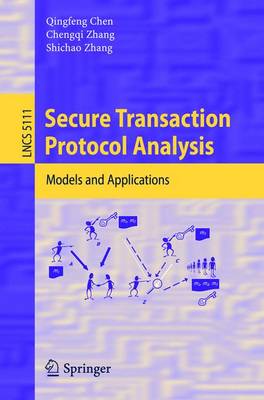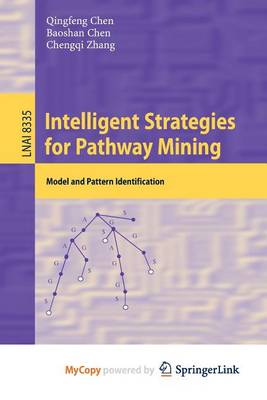Lecture Notes in Computer Science
2 primary works
Book 5111
Secure Transaction Protocol Analysis
by Qingfeng Chen, Chengqi Zhang, and Shichao Zhang
Published 30 July 2008
The application of formal methods to security protocol analysis has attracted increasing attention in the past two decades, and recently has been sh- ing signs of new maturity and consolidation. The development of these formal methodsismotivatedbythehostilenatureofsomeaspectsofthenetworkand the persistent e?orts of intruders, and has been widely discussed among - searchers in this ?eld. Contributions to the investigation of novel and e?cient ideas and techniques have been made through some important conferences and journals, such asESORICS,CSFW andACM Transactions in Computer Systems. Thus, formal methods have played an important role in a variety of applications such as discrete system analysis for cryptographic protocols, - lief logics and state exploration tools. A complicated security protocol can be abstractedasamanipulationofsymbolsandstructurescomposedbysymbols. The analysis of e-commerce (electronic commerce) protocols is a particular case of such symbol systems. There have been considerable e?orts in developing a number of tools for ensuring the security of protocols, both specialized and general-purpose, such as belief logic and process algebras. The application of formal methods starts with the analysis of key-distribution protocols for communication between two principals at an early stage. With the performance of transactions - coming more and more dependent on computer networks, and cryptography becoming more widely deployed, the type of application becomes more varied and complicated. The emerging complex network-based transactions such as ?nancial transactionsand secure groupcommunication have not only brought innovationstothecurrentbusinesspractice,butthey alsoposeabigchallenge to protect the information transmitted over the open network from malicious attacks.
Book 8335
Intelligent Strategies for Pathway Mining
by Qingfeng Chen, Baoshan Chen, and Chengqi Zhang
Published 8 January 2014
This book is organized into thirteen chapters that range over the relevant approaches and tools in data integration, modeling, analysis and knowledge discovery for signaling pathways. Having in mind that the book is also addressed for students, the contributors present the main results and techniques in an easily accessed and understood way together with many references and instances. Chapter 1 presents an introduction to signaling pathway, including motivations, background knowledge and relevant data mining techniques for pathway data analysis. Chapter 2 presents a variety of data sources and data analysis with respect to signaling pathway, including data integration and relevant data mining applications. Chapter 3 presents a framework to measure the inconsistency between heterogenous biological databases. A GO-based (genome ontology) strategy is proposed to associate different data sources. Chapter 4 presents identification of positive regulation of kinase pathways in terms of association rule mining. The results derived from this project could be used when predicting essential relationships and enable a comprehensive understanding of kinase pathway interaction. Chapter 5 presents graphical model-based methods to identify regulatory network of protein kinases. A framework using negative association rule mining is introduced in Chapter 6 to discover featured inhibitory regulation patterns and the relationships between involved regulation factors. It is necessary to not only detect the objects that exhibit a positive regulatory role in a kinase pathway but also to discover those objects that inhibit the regulation. Chapter 7 presents methods to model ncRNA secondary structure data in terms of stems, loops and marked labels, and illustrates how to find matched structure patterns for a given query. Chapter 8 shows an interval-based distance metric for computing the distance between conserved RNA secondary structures. Chapter 9 presents a framework to explore structural and functional patterns of RNA pseudoknot structure according to probability matrix. Chapter 10 presents methods to model miRNA data and identify miRNA interaction of cross-species and within-species. Chapter 11 presents an approach to measure the importance of miRNA site and the adjacent base by using information redundancy and develops a novel measure to identify strongly correlated infrequent itemsets. The discover association rules not only present important structural features in miRNAs, but also promote a comprehensive understanding of regulatory roles of miRNAs. Chapter 12 presents bioinformatics techniques for protein kinase data management and analysis, kinase pathways and drug targets, and describes their potential application in pharmaceutical industry. Chapter 13 presents a summary of the chapters and give a brief discussion to some emerging issues.

